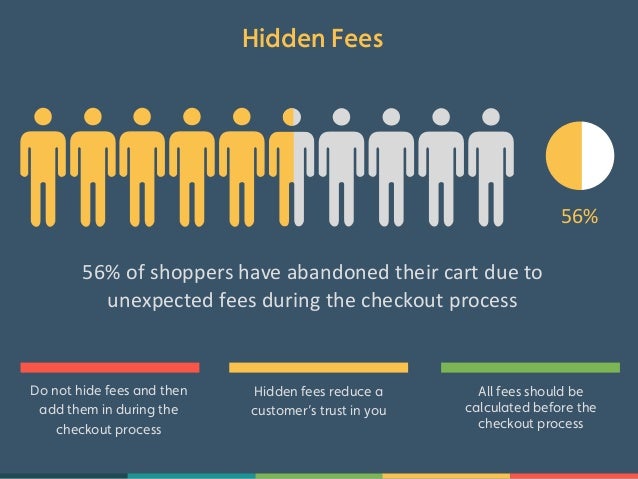In a perfect world, shopping carts would never get left behind. Unfortunately for eCommerce owners, shopping cart abandonment is inevitable. According to the Baymard Institute, 7 out of every 10 online shopping carts are abandoned before the final step of payment processing. Understanding why so many consumers don’t follow through with their purchases is a vital part of re-marketing to these buyers and ensuring a sale. Below are a few examples of why customers leave and respective strategies to guide them back to their shopping carts.
Reasons for Abandoned Carts:
Shipping costs and hidden fees Often when a customer reaches the checkout, they are surprised to find unmentioned shipping fees and taxes. With the rapid growth of eCommerce grows the competition of other companies offering free services. If customers get to the checkout and realize you don’t offer free shipping, they are likely to look elsewhere.

Comparing several companies In this “Age of the Consumer” it is impossible to avoid being compared to several other companies offering the same products. Whether they are comparing prices, quality, promotions, or shipping, your customers will likely add multiple things to their cart with only the intention to reference back to the products. A possible solution to this would be to offer a price match, which betters your chances of attaining their business.
Requiring a user account The attractiveness of eCommerce is largely based on the convenience of each shopping experience. By the time customers decidedly check out their items, they expect it to be as simple as possible. Allowing your customers to purchase as guests eliminates a major source of friction in your checkout process. 
Security of payment An outdated design and/or images can make a shopper wary of your company’s security, thus repelling them from entering their CC information. Providing icons of your security system(s) on the page of checkout can comfort an unsure customer. They are less likely to believe that their information will be stolen from a third party if your website has extra security measures. You can also ensure authenticity by advertising public reviews and adding pictures with biographies of your staff. Personalizing your company’s websites assures your customers that they are supporting a trustworthy team.
Payment options The more payment options, the better. When it comes to financials, everyone has their preferred method of payment. If you aren’t offering PayPal or AmEx, odds are that your competitor is. It’s best to give your customers the freedom to choose.

Lack of customer support According to a recent study, 83% of online shoppers claim they prefer assistance when on a site. 51% of these shoppers also said they’re more likely to make a purchase if they were offered online customer support. Live chat is a great way to interact with customers while they’re browsing. A community forum is also a great feature to highlight frequently asked questions.
Mobile usability issues While roughly half of all eCommerce is conducted via mobile device, not all websites are mobile friendly (which can be a huge turnoff to customers). If possible, it’s best to test a full checkout on Apple, Android, and Windows devices to ensure your checkout usability is universal.
Optimizing Abandoned Cart Flows
So how does one address this issue? Email marketing is perhaps the most effective way to reduce abandoned carts. A flow is a series of emails that automatically sends when a customer takes any targeted action (i.e. joins a mailing list). A specific flow that you can implement is an abandoned cart flow, which is triggered when a customer adds to their cart and exits the page without checking out within a certain amount of time. Some important factors to perfect your abandoned cart flow are timing and content.
Timing of emails The universally suggested number of emails for this specific flow ranges from three to four. After this, the rates of customers opening said emails plummets. The suggested schedule for these emails begins the moment your customer abandons his/her cart. The first email should be sent roughly 1-3 hours after abandonment, the second 24-48 hours, and the third after 2-3 days. This 3-day window is a delicate, yet crucial time to get your customers back to their carts.
Content of emails Although you may be anxious to blurt out every reason they should return to your website, it's best to keep it short and sweet. Too much general information in an email lessens the likelihood of the customer reading, much less digesting, the email's content. Try to avoid a generalized sales pitch. Personalize this flow and tailor it as much as possible to your customer. This may include first and last name (if available), specific product images and descriptions of what they left behind, and related products to these items. While it is indeed meticulous, creating an abandoned cart flow is a strategic task that aids you in your ongoing battle against neglected shopping carts. If you would like to nip this phenomenon in the bud, another thing to consider is optimizing your conversion tactics. Read our list of 10 Ways to Increase Your eCommerce Conversion Rate to brush up your knowledge on preventing abandoned carts.

